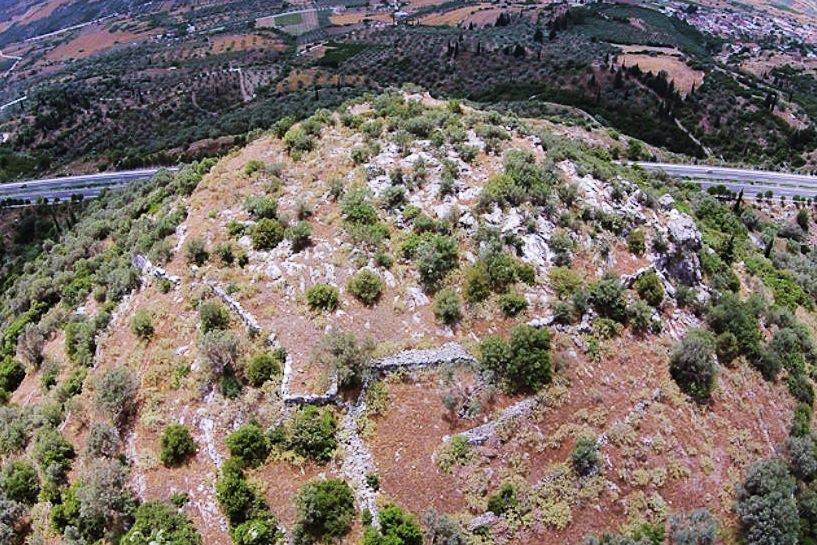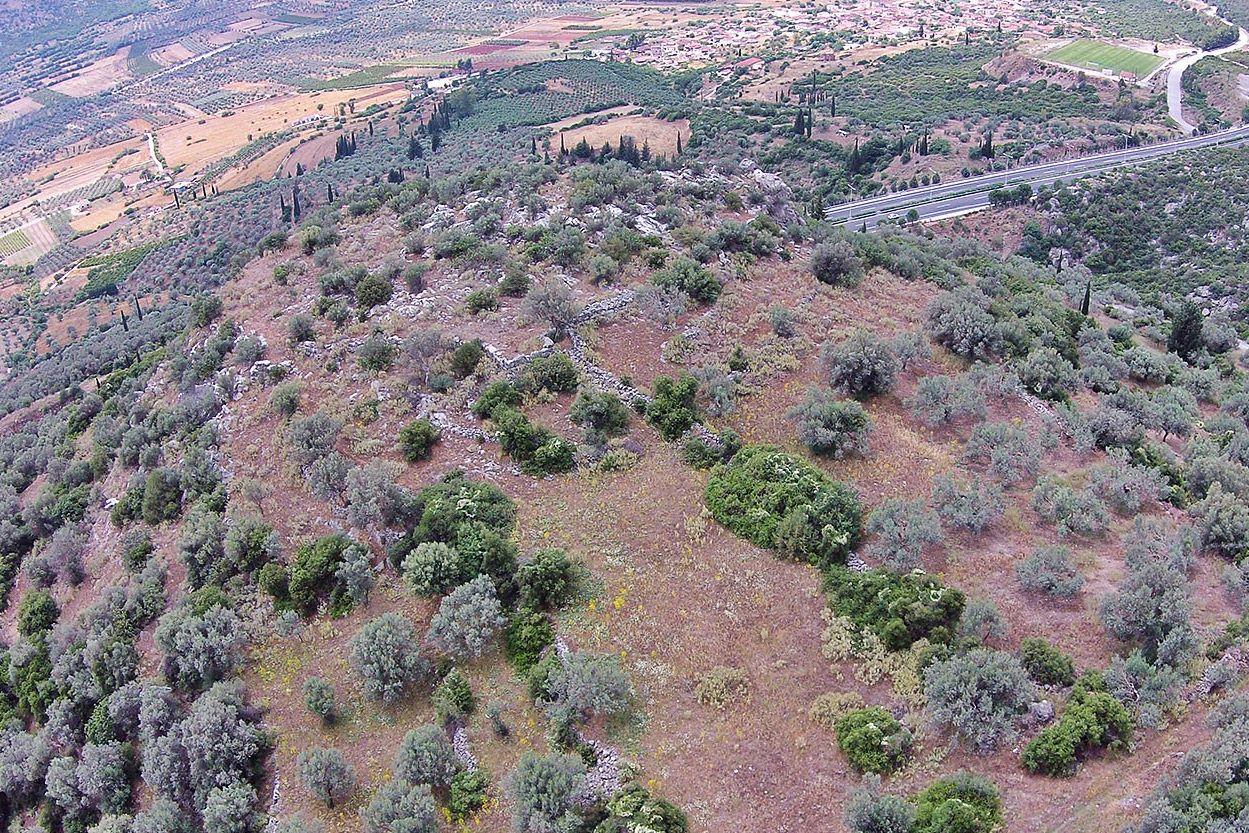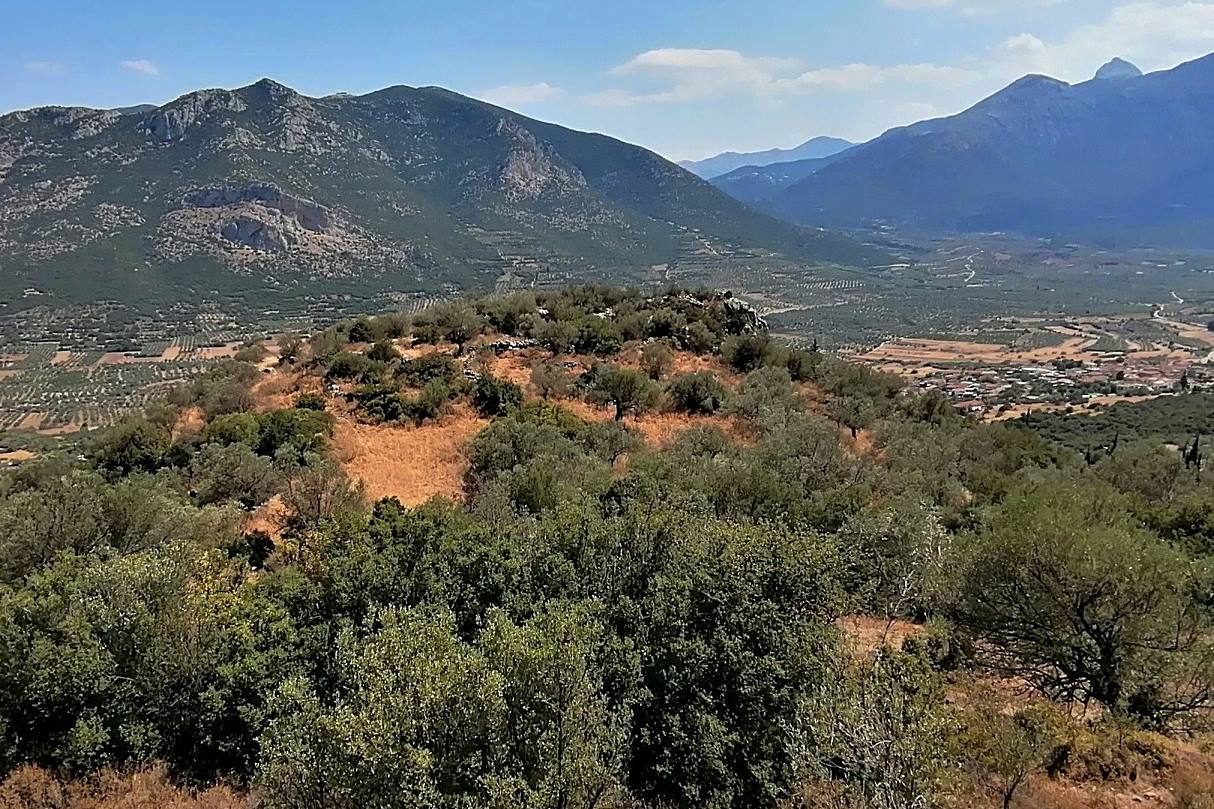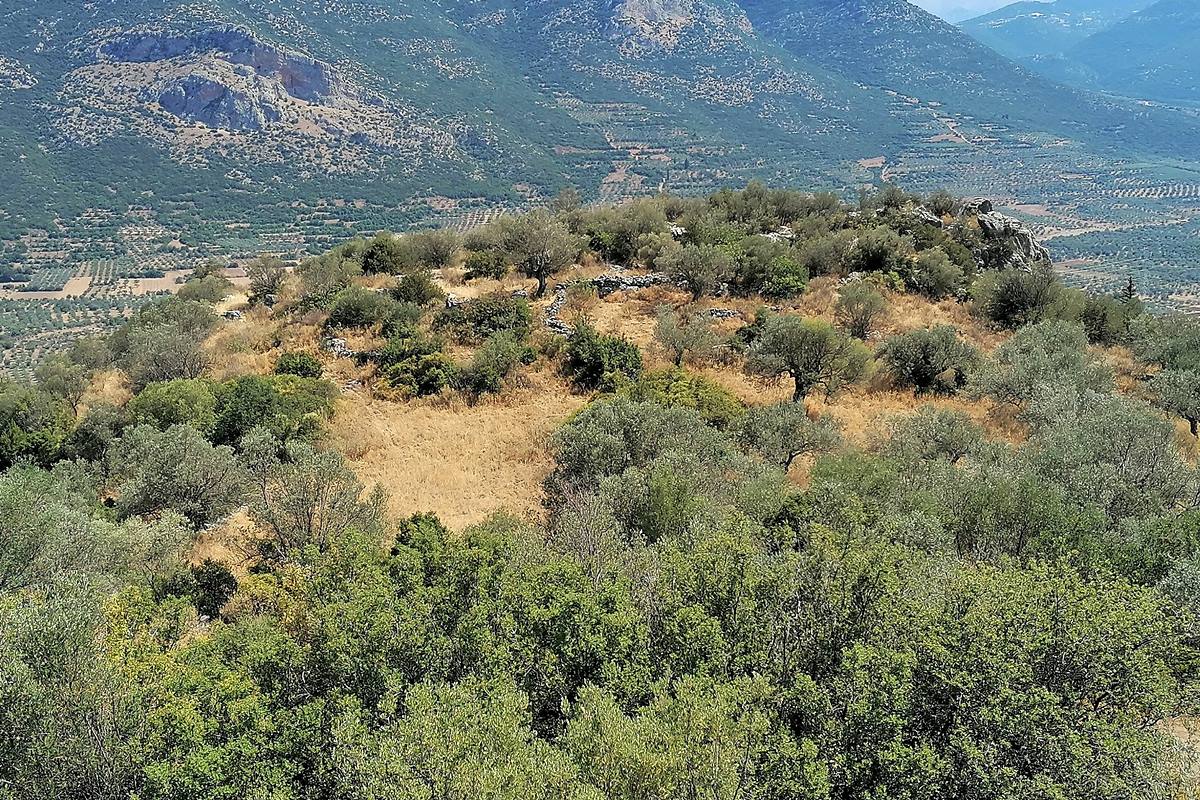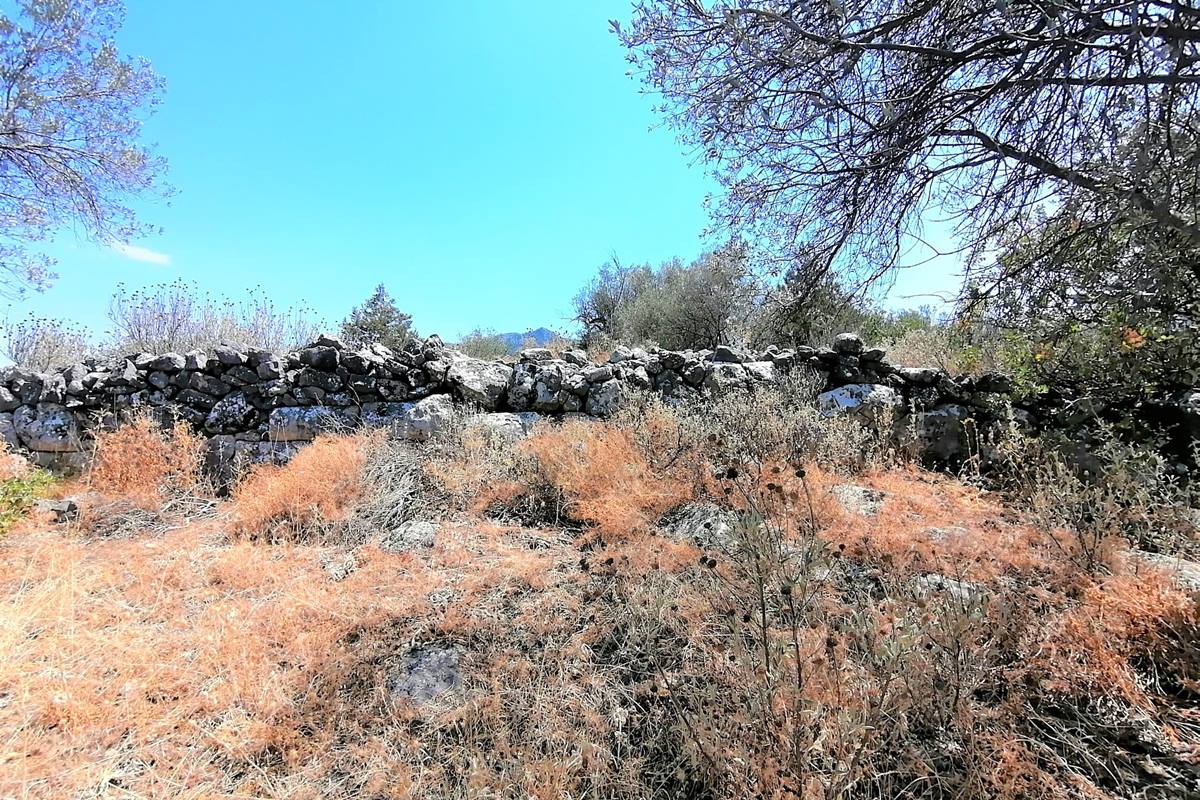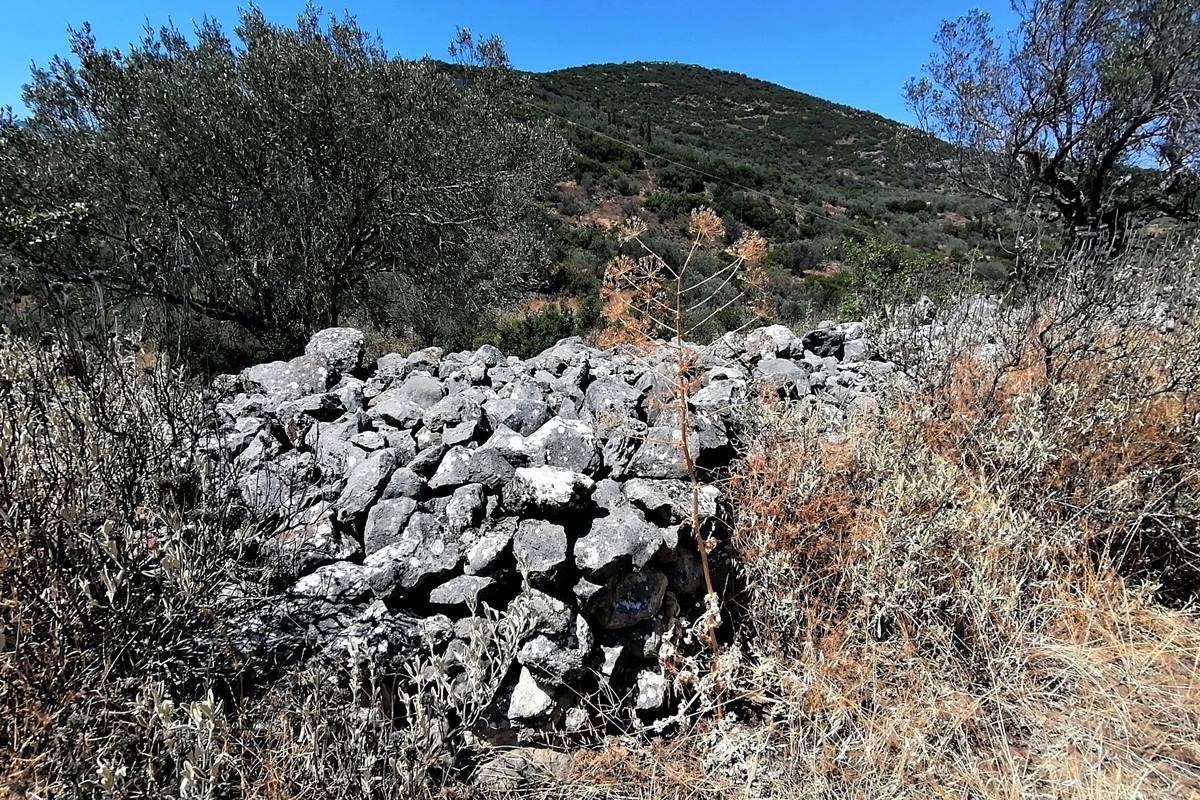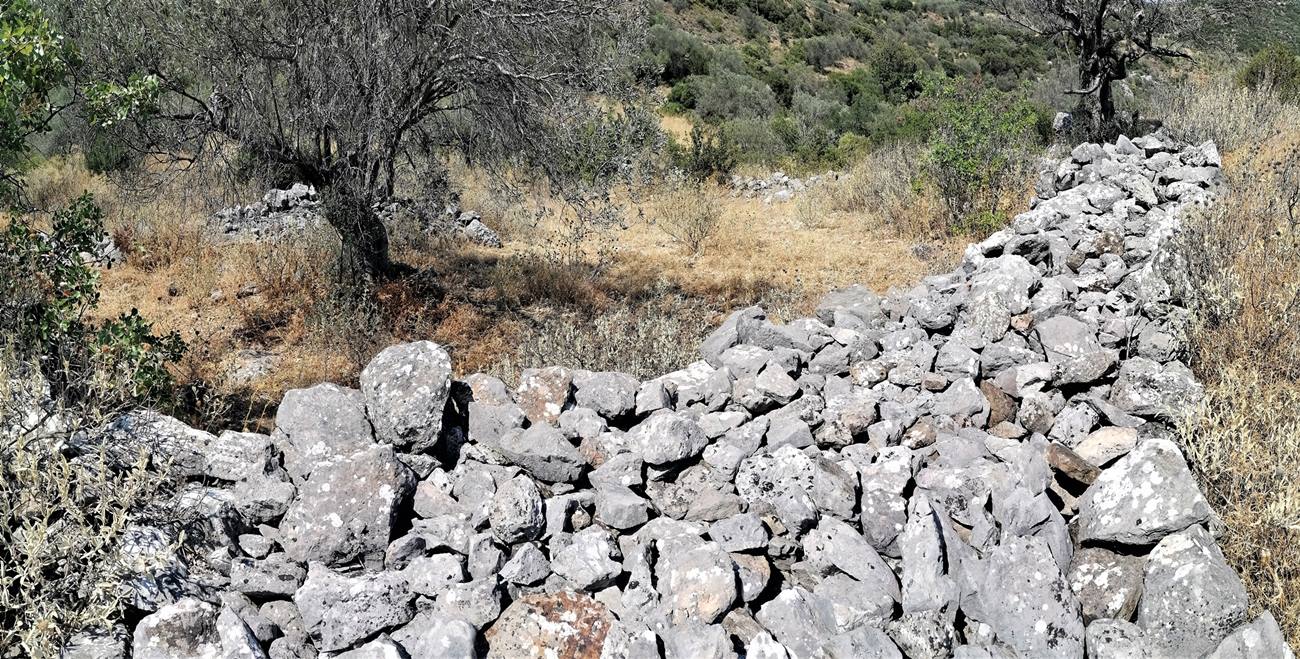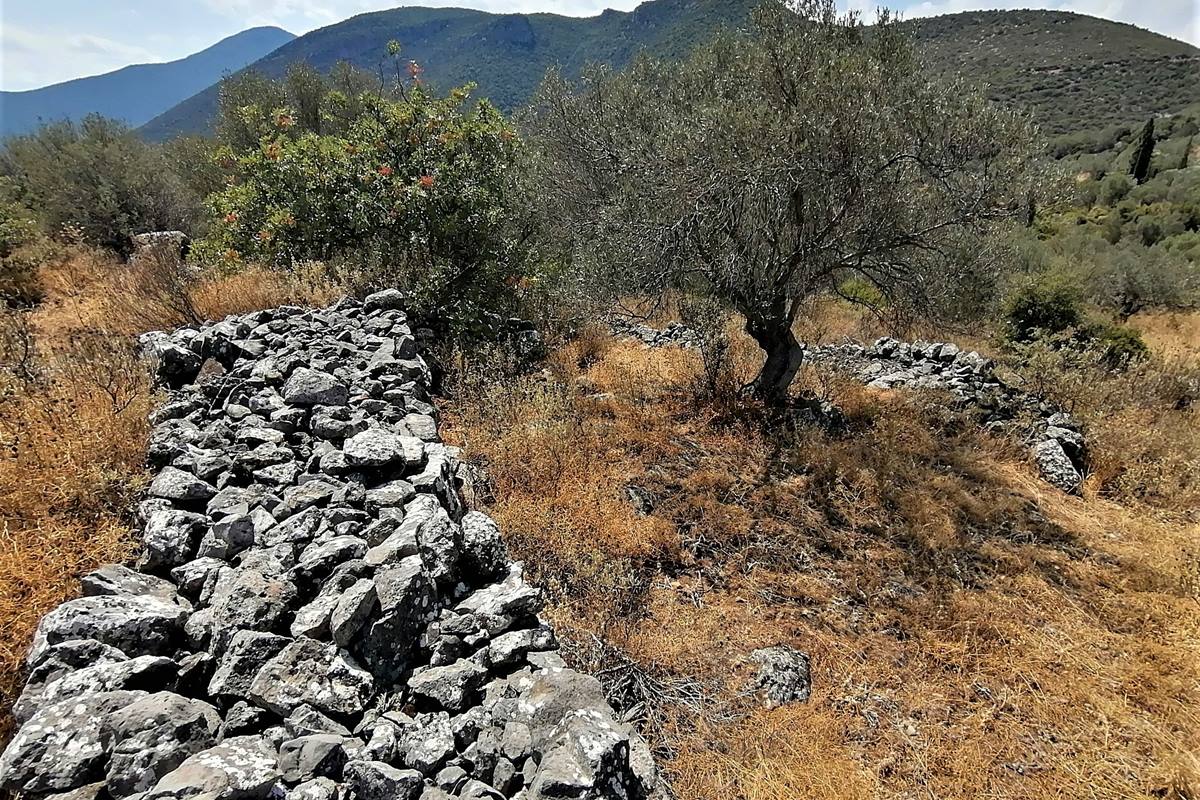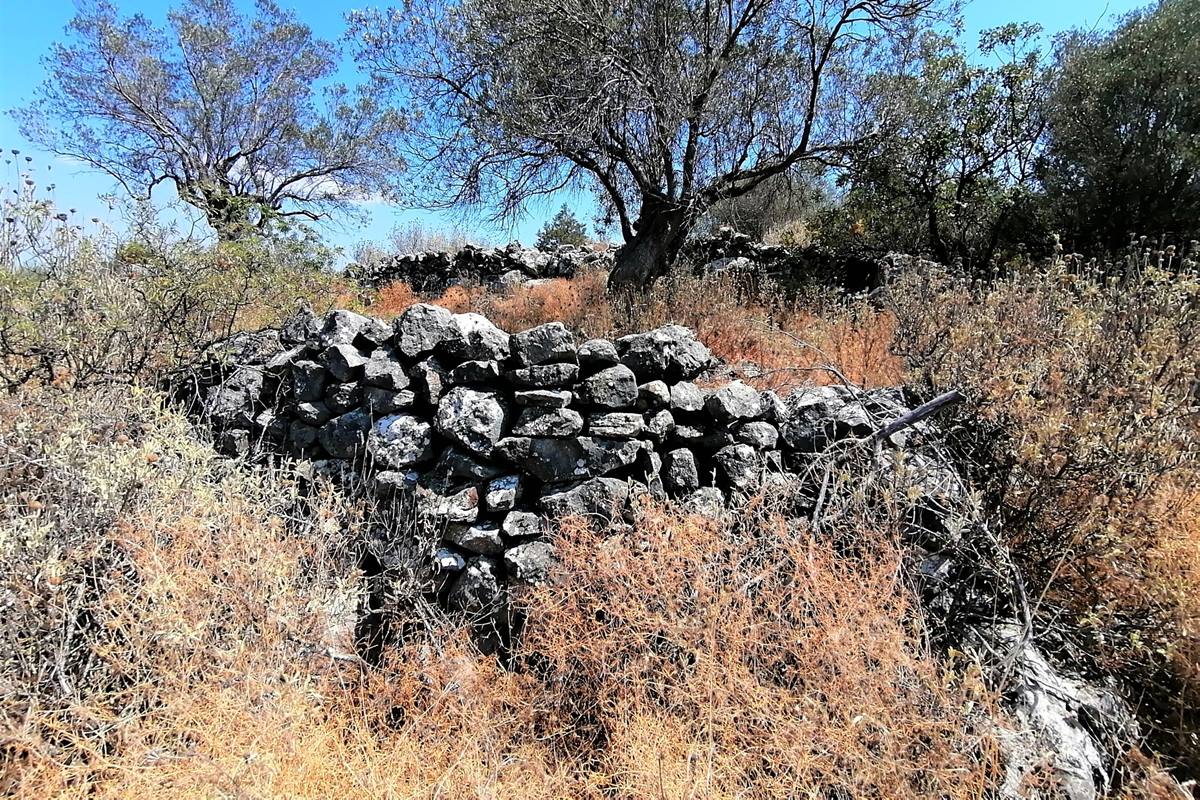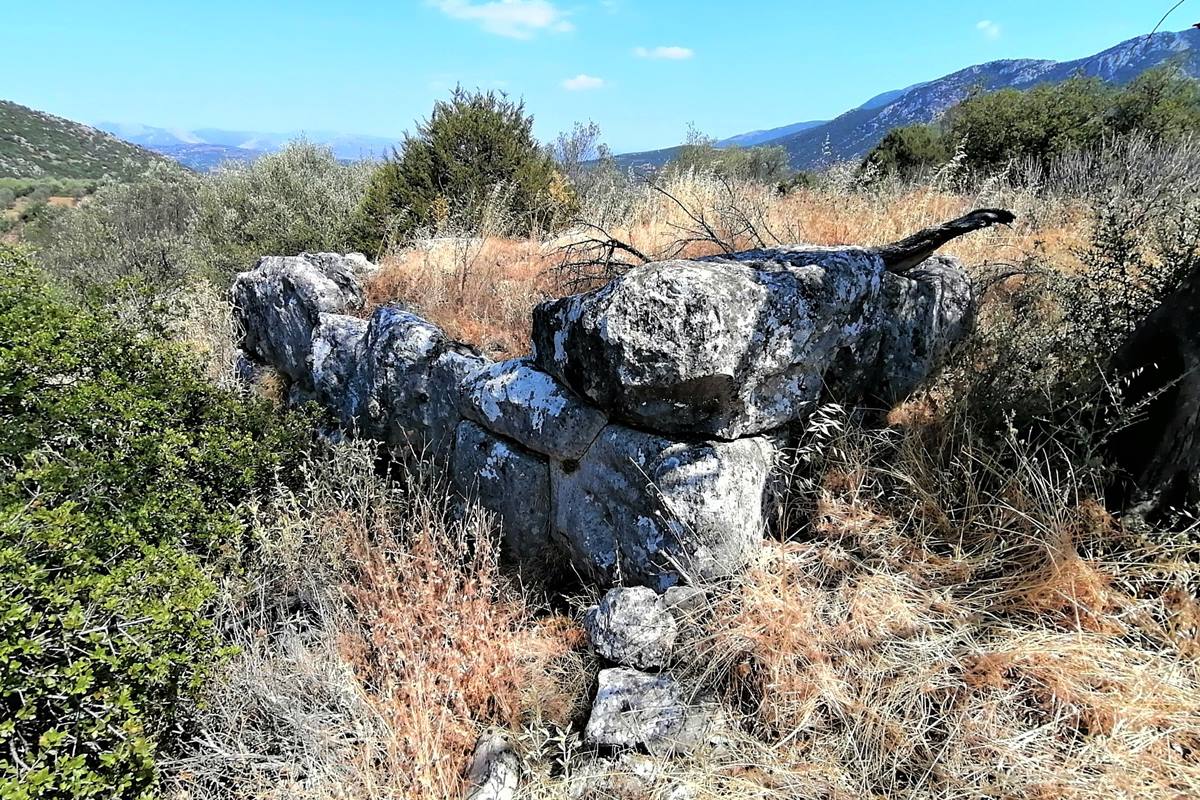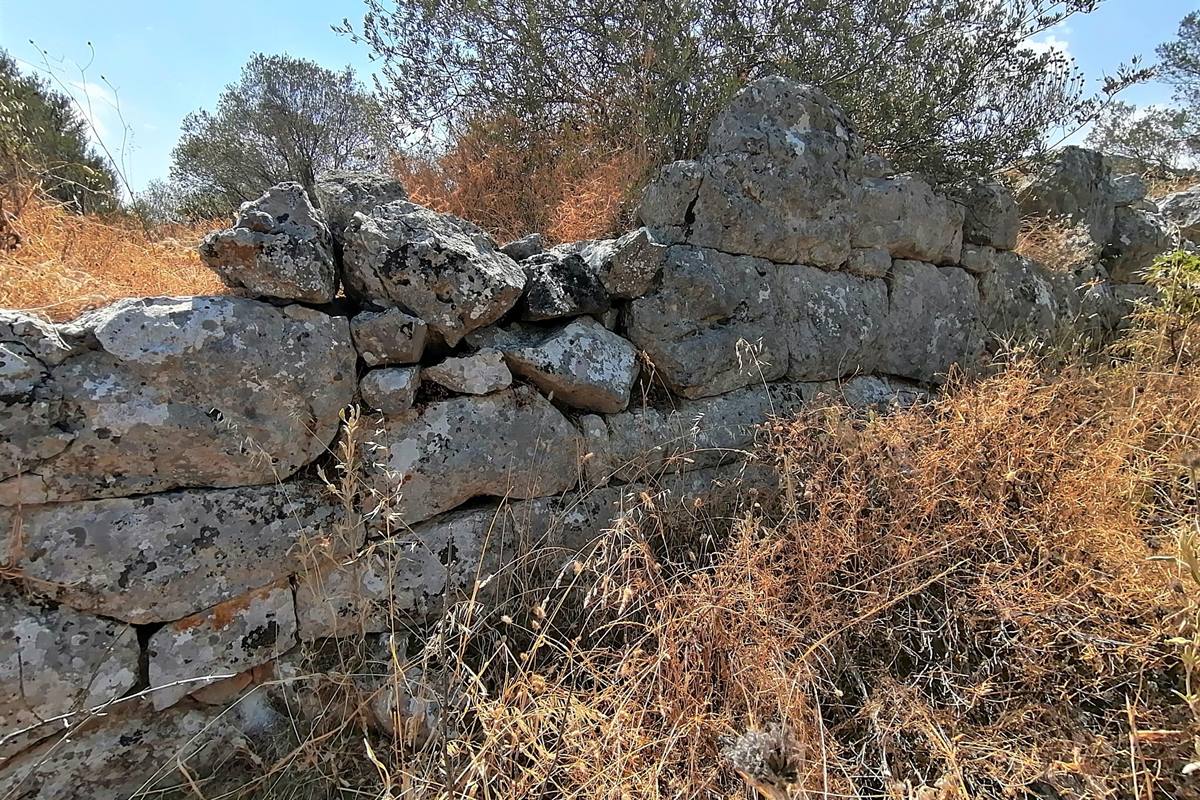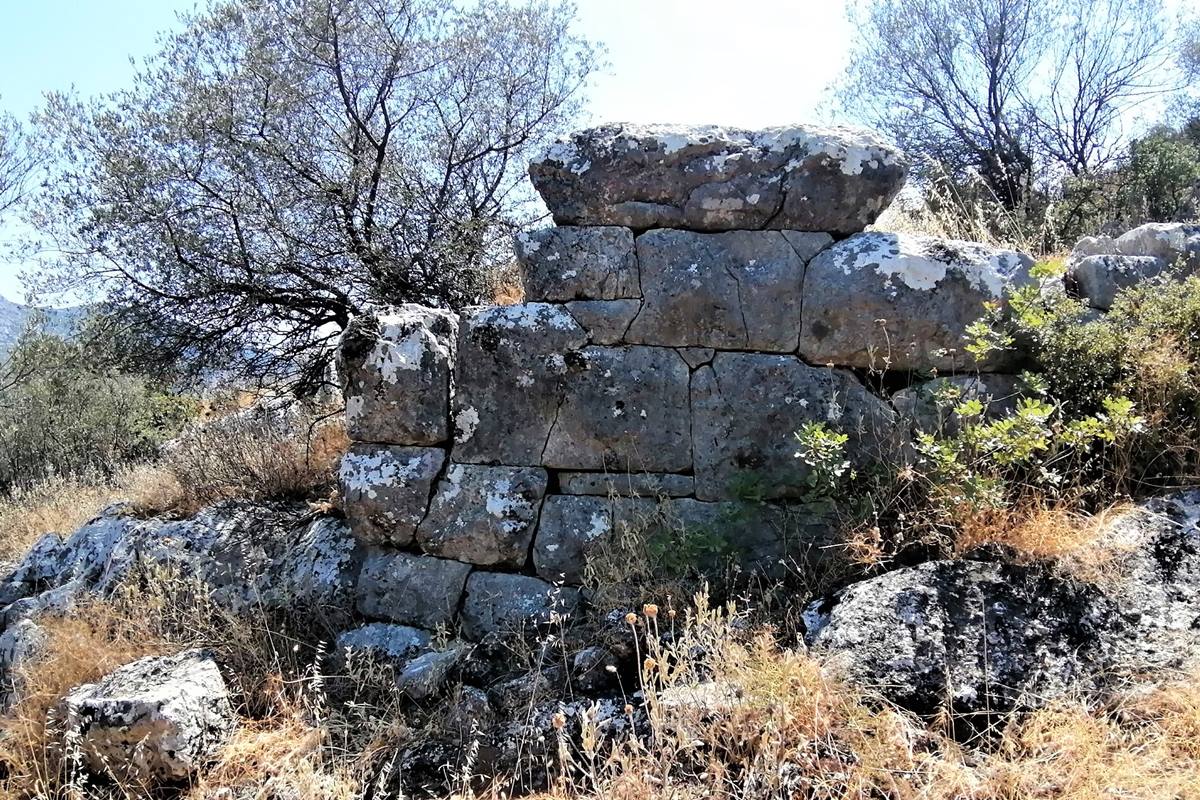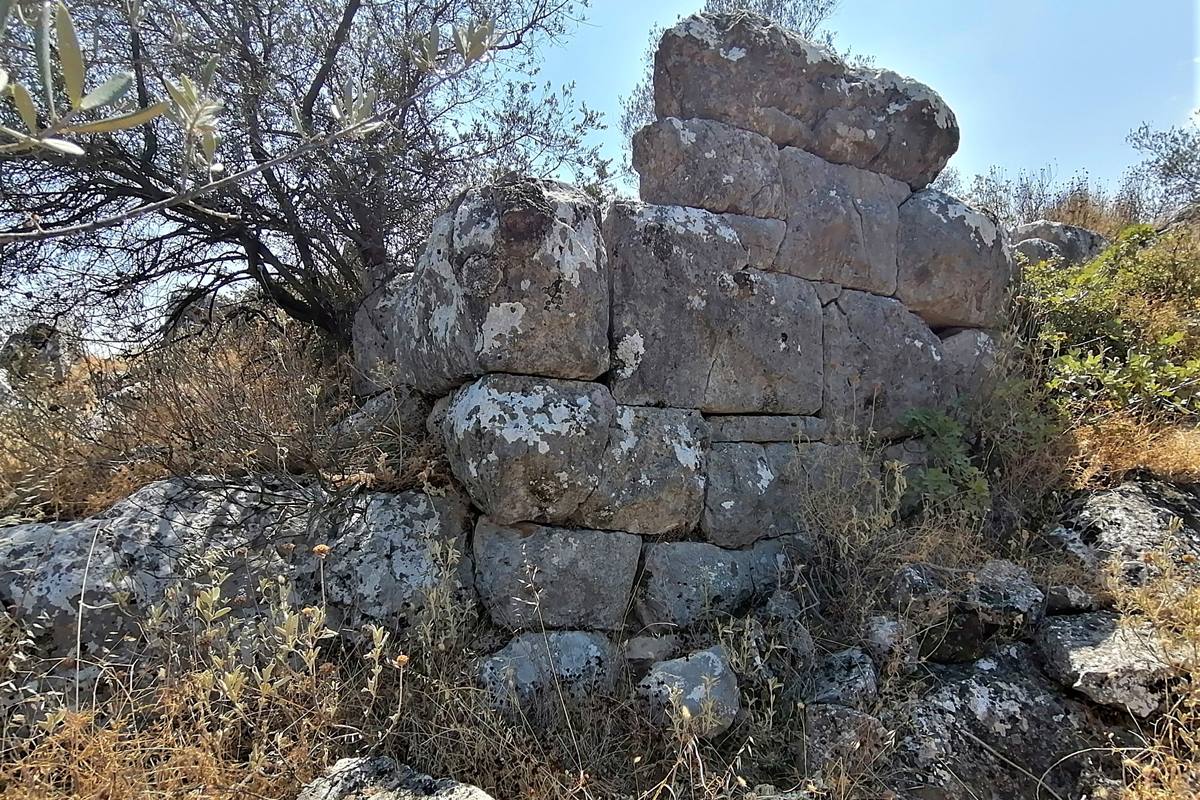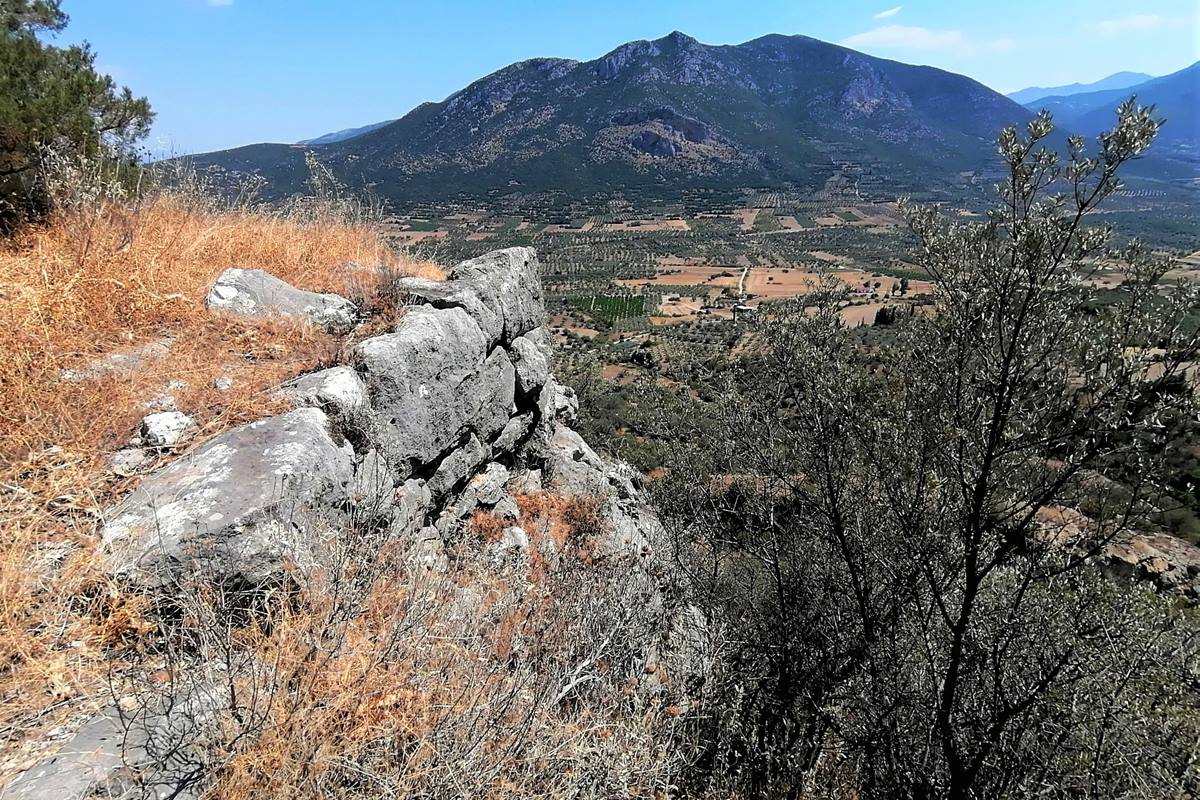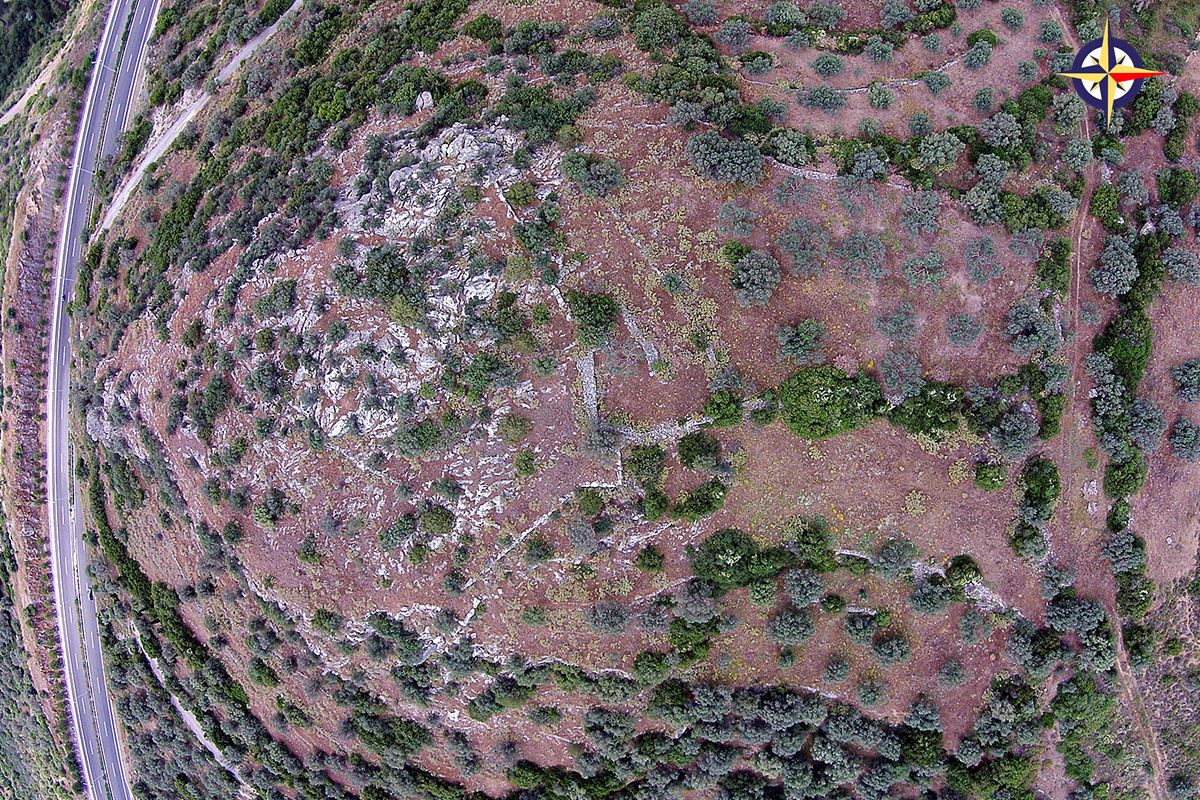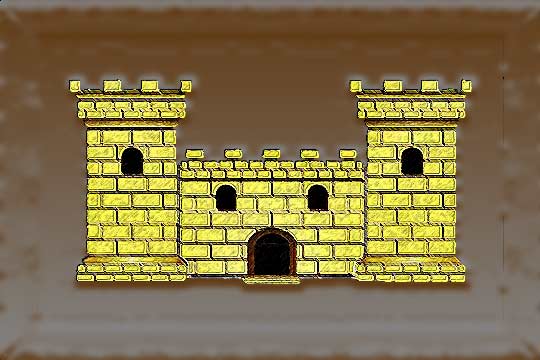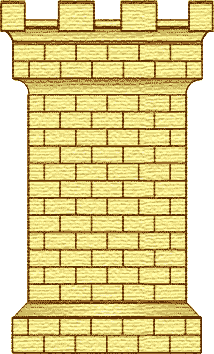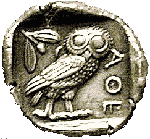Lyrkeia, Argos-Mycenae, Argolis,Peloponnese
Castle of Lyrkeia
| Location: |
| On a hill 1km NE of the village Lyrkeia of Argolis, above the NR Corinth-Tripolis |
| Region > Prefecture: |  |
| Peloponnese Argolis | |
| Municipality > Town: | |
| City of Argos-Mycenae • Lyrkeia | |
| Altitude: | |
|
Elevation ≈ 338 m (Relative Height≈52 m) |
| Time of Construction | Origin | |
| Various periods | ANCIENT |
|
| Castle Type | Condition | |
| Ancient City |
In Ruins
|
Ruins of an ancient fortification with medieval additions on the plateau of a hill named “Palaeokastraki”, at the eastern foot of Mount Lyrkeio, 1 km. northeast of the village of Lyrkeia, Argolida.
The site is located above the Corinth-Tripoli National Road (A7), at the 128th kilometer.
The Name of the Castle
We call the castle “Castle of Lyrkeia” because the nearest modern settlement is the village of Lyrkeia. The old name of the village was Kato Belesi and it is recorded under this name in the Venetian Grimani census of 1700.
Kato Belesi was renamed Lyrkeia in 1928, because at that time it was believed that the ancient castle to the northeast of the village was the acropolis of the ancient city of Lyrkeia or Lygkia. However, more recent archaeological research has shown that ancient Lyrkeia was located elsewhere (about 7km southeast, on the south bank of Inachos, north of Schinohori).
Today, what we call here Castle of Lyrkia is identified with the ancient city of Orneai.
The researcher of the medieval castles of Argolis I. Peppas (Peppas, 1990) calls the fortification “Castle of Sportiza”. Sportiza is the name of the low mountain (620m) north of the hill (which, however, does not seem to have any relation –geographical or historical– with the castle of this page). Based on this name, Peppas identifies the castle with the Spoliza castle recorded in the Venetian list of castles of 1467. But this is probably not the case, because “Sportiza” seems a bit arbitrary and, moreover, because Spoliza was towards Messinia or Ilia and is more likely to be identified with Figaleia, whose old name was Poliça.
History
As mentioned above, the site of the castle was probably ancient Orneai.
The name of the city comes from the first settler Orneus, son of Erechtheus.
Thucydides reports that Orneai and Cleonae fought on the side of the Argives against the Spartans, in the Battle of Mantinea in 418 BC.
Two years later, the allies became enemies and Orneai was destroyed by the Argives in 416 BC.
The involvement of Ornea in the conflicts with Archidamus (352 BC) shows that despite the destruction by the Argives, the city was not deserted and continued to be inhabited (or repopulated).
Most of the fortifications date from Antiquity, built before the 5th BC. century, perhaps even earlier.
During the Hellenistic and Roman Periods the village was inhabited (it is mentioned by Pausanias) and it must have continued to be inhabited during the Byzantine Period.
At some point the ancient walls were reinforced with dry stone walls. This probably happened in the Middle Ages, but we cannot know exactly when. The medieval history of the site is unknown.
Structure, Fortification & Buildings
The fortification occupies an area of 6.500 sq.m. within a perimeter of 300 meters.
The largest part of the wall is ancient. Its thickness is 0.80 m. It consists of worked irregular boulders and smaller stones.
On the northern side, which is more vulnerable, a part of the 38-meter-long walls has been reinforced or replaced with a newer dry-stone wall, reminiscent of other dry-stone fortifications in the area (Kapareli, etc.).
The castle has 3 towers. Two ancient and one dry-stone. One of the ancient ones, measuring 5.50✖5.30m, protected the entrance.
| First entry in Kastrologos: | March 2025 |
Sources
- Ιστοσελίδα Περιήγηση στα Μνημεία της Αργολίδας της Εφορείας Αρχαιοτήτων Αργολίδας Ακρόπολη Λυρκείας απ’ όπου οι φωτο 1,2,15
- Πληροφορίες και φωτογραφίες 3-14 (Αύγουστος 2022): Γεώργιος Πρίμπας, από άρθρο στο blog του με τίτλο στην αρχαία Λύρκεια ή ίσως στις αρχαίες Ορνεές, 02.08.2022
- Ιωάννης Ε. Πέππας, «Μεσαιωνικές σελίδες της Αργολίδος, Αρκαδίας, Κορινθίας, Αττικής», Αθήνα 1990, σελ.140, απ’ όπου και το σχεδιάγραμμα της κάτοψης
- Δημήτριος-Περσέας Λουκίσσας, «Αργολίδας-Κορινθίας Περιήγησις», τόμος Α’, Ανοιχτή Πόλη, Αθήνα, 2024 σελ.146
|
|
| Access |
|---|
| Approach to the monument: |
| Follow the road from the village of Lyrkeia towards the village stadium and continue along the road for about 1400m, until a dirt road begins to the right, which goes near the summit. |
| Entrance: |
| Free access |



